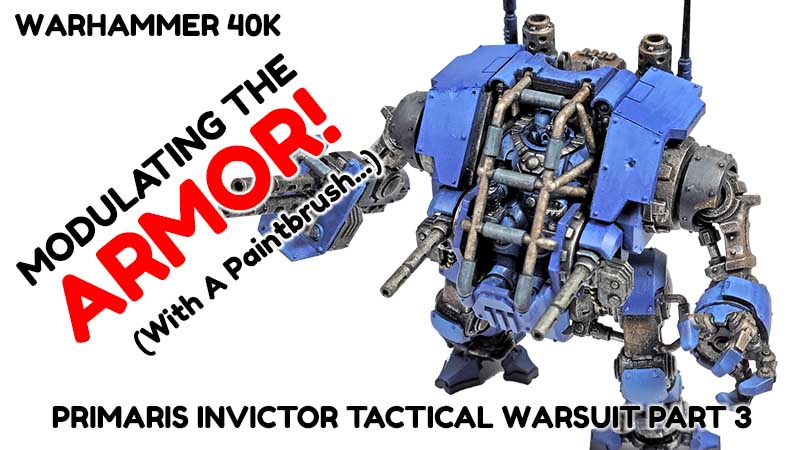Modulation with a brush is a simple way to add a cool effect to your models. While it is traditionally done with an airbrush, a similar effect can be accomplished the old fashioned way.
Of course, there is a bit of a tradeoff. The gradient is not quite as smooth. However, I wouldn’t sweat that too much.
For one, once some weathering is added over the modulated base color, most of the “patchiness” will be blended in. Secondly, I think the slight bit of distressing is actually a cool effect. And finally, if you don’t have an airbrush, what other choice do you have? 🙂
Modulation With A Brush
As with so many techniques in our hobby, the key is using a very basic technique. In this case, it’s glazing. Thinning the paint down so when applied it is in very thin coats. Building this up gradually, each time covering a little less area, will get you there in no time.
In some cases it only requires the use of a single color that is a few shades lighter than the base. In others, especially if it’s over a greater distance, the use of two or even three other colors may work.
Using glaze medium is a great option, but in many case, POTW can also work great. (Plain Old Tap Water!) And the effect doesn’t need to be across an entire model. Sometimes modulating just a few key panels and areas will help them stand out better.
If you’ve never done it before, it’s actually very beginner friendly. Take your time, building up layers slowly, and eventually you’ll see how thin the paint needs to be, how many graduations will be required, etc. Before long you’ll be modulating your way through a model!
If you’re not familiar with what modulation is, this video might be helpful.


Leave a Reply